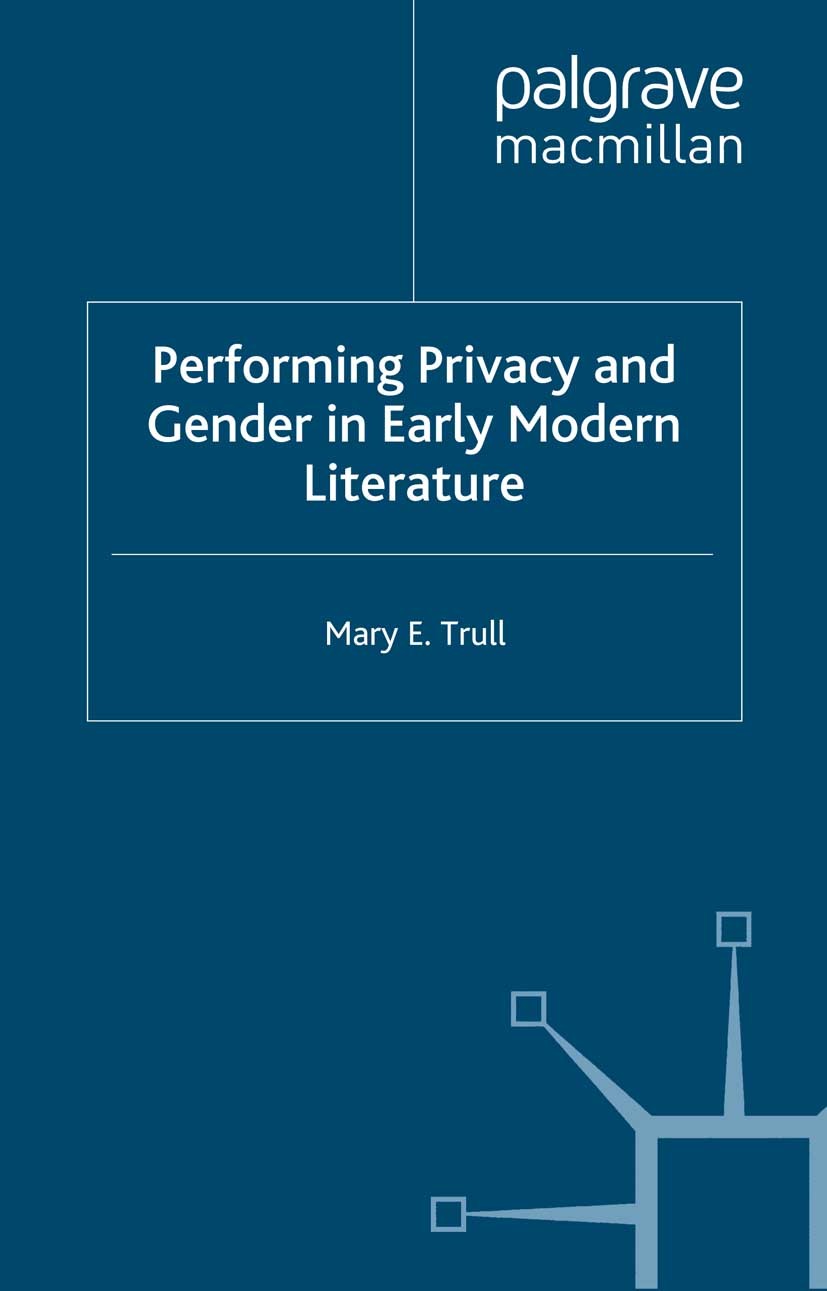| 书目名称 | Performing Privacy and Gender in Early Modern Literature | | 编辑 | Mary E. Trull | | 视频video | http://file.papertrans.cn/744/743968/743968.mp4 | | 丛书名称 | Early Modern Literature in History | | 图书封面 |  | | 描述 | This book argues that the early modern public/private boundary was surprisingly dynamic and flexible in early modern literature, drawing upon authors including Shakespeare, Anne Lock, Mary Wroth, and Aphra Behn, and genres including lyric poetry, drama, prose fiction, and household orders. An epilogue discusses postmodern privacy in digital media. | | 出版日期 | Book 2013 | | 关键词 | Early Modern Literature; English literature; fiction; gender; lyric; poetry; prose; William Shakespeare; wom | | 版次 | 1 | | doi | https://doi.org/10.1057/9781137282996 | | isbn_softcover | 978-1-349-44882-1 | | isbn_ebook | 978-1-137-28299-6Series ISSN 2634-5919 Series E-ISSN 2634-5927 | | issn_series | 2634-5919 | | copyright | Palgrave Macmillan, a division of Macmillan Publishers Limited 2013 |
The information of publication is updating

|
|
 |Archiver|手机版|小黑屋|
派博传思国际
( 京公网安备110108008328)
GMT+8, 2025-11-22 23:43
|Archiver|手机版|小黑屋|
派博传思国际
( 京公网安备110108008328)
GMT+8, 2025-11-22 23:43


